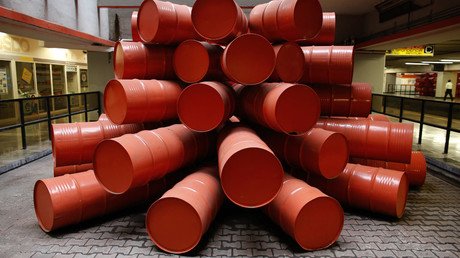Russia may cut crude output by 14% over next 4yrs

Russia’s Energy Ministry has worked out a stress test on the basis of an oil price at $42 per barrel by 2020.
With such a scenario Russian crude production could average 460 million tons a year in 2020 compared with a bullish perspective of 525 million tons annually.
According to the stress test, an “acute crisis of the energy industry’s underfunded development” could become obvious after 2020. That would lead to crude and later gas price growth. The price of a barrel of oil could exceed $100 no earlier than 2035.
In terms of the stress scenario, oil industry tax payments will reduce by 60-65 percent over the next six years. The gas industry could see a 20-25 percent cut in tax payments by 2025.
The stress test is based on several factors such as the slowdown in growth in China and other Asian countries; an increase in supply of cheap Middle Eastern oil as well as US shale oil and gas; an output increase in other oil producing countries (in the wake of lower costs due to the devaluation of their currencies); the absence of regulatory impact on the market by the main players.
READ MORE: Russia and Saudi Arabia agree to freeze oil production output
On Tuesday top global crude producers Russia and Saudi Arabia agreed to freeze oil production levels. Qatar, Venezuela, Kuwait, and later the initiative’s main opponent Iran also joined the preliminary deal.
Oil prices surge as #Iran calls crude output freeze 'positive' https://t.co/v1Bpf6y8N1pic.twitter.com/9zLewYC7K4
— RT (@RT_com) February 18, 2016
The move led to an oil price surge with benchmark Brent gaining seven percent on Wednesday and another two percent gain on Thursday to over $35 per barrel. American WTI crude rose by 2.35 percent above $31 a barrel, as of 2:30pm GMT.













